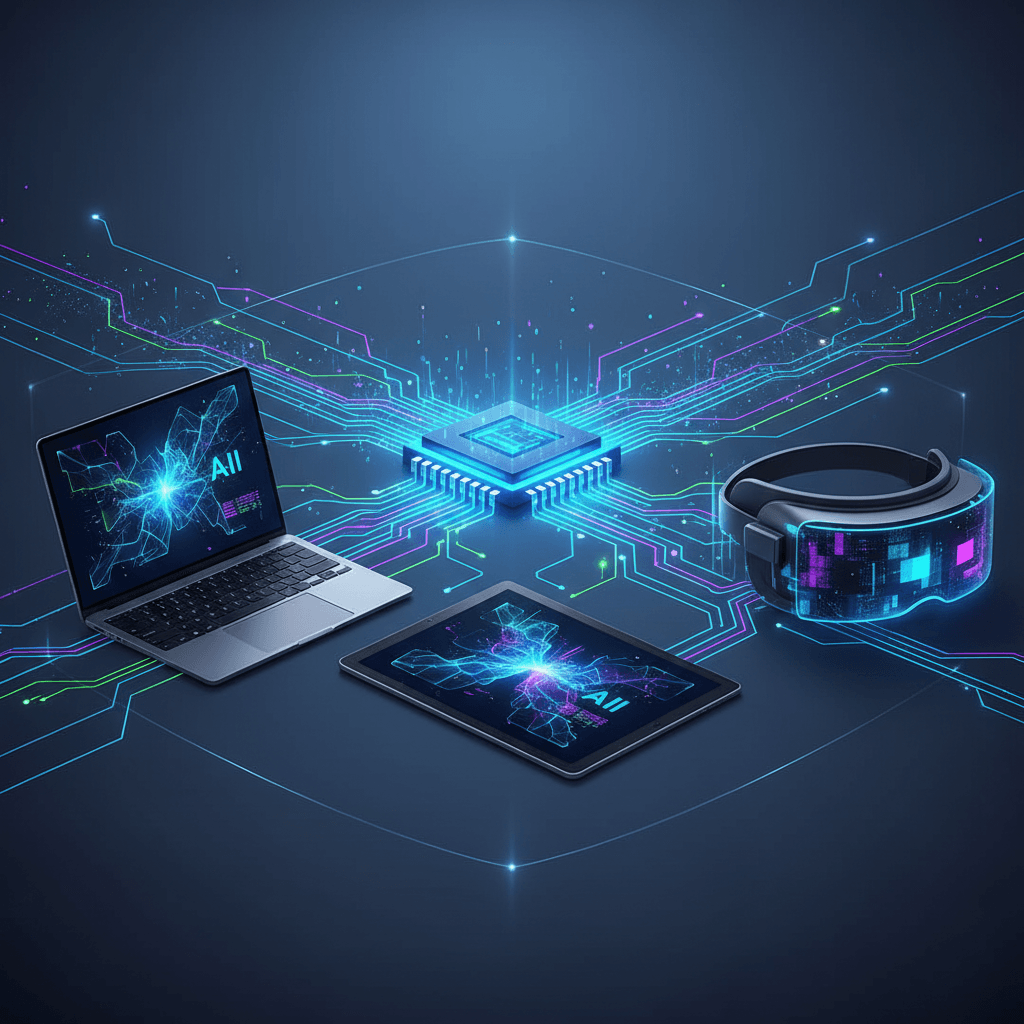Apple's M5 Chip Ushers In New Era of On-Device AI Computing
Apple's M5 chip ushers in a new era of on-device AI, boosting performance, privacy, and user experience across its ecosystem.
October 15, 2025

Apple has introduced its latest custom silicon, the M5 chip, a move that signals a significant acceleration of its artificial intelligence ambitions across its product lines. The new system on a chip (SoC) is designed to bring enhanced AI processing capabilities to the 14-inch MacBook Pro, iPad Pro, and the Apple Vision Pro.[1][2][3] Built on a third-generation 3-nanometer process, the M5 is not merely an incremental update but a strategic move to handle complex AI workloads directly on the device, underscoring a commitment to performance, efficiency, and user privacy.[2][4] This development is poised to have a considerable impact on the user experience of these flagship products and sets a new benchmark in the competitive landscape of personal computing.
At the core of the M5's design is a focus on boosting AI and machine learning performance. The chip features a next-generation 10-core graphics processing unit (GPU), with each core now housing a Neural Accelerator.[1][5] This architectural enhancement delivers a substantial increase in GPU-based AI computations, with Apple claiming over four times the peak GPU compute performance for AI compared to its predecessor, the M4.[1][4] The M5 also boasts an improved 16-core Neural Engine, which further accelerates on-device AI tasks and enhances the performance of generative models that power Apple Intelligence features.[6][7] This translates to tangible benefits for users, such as faster text-to-image generation in apps and more responsive performance for large language models running locally.[6] A significant contributor to these AI advancements is the nearly 30 percent increase in unified memory bandwidth, now at 153GB/s.[1][3] This allows for larger and more complex AI models to run directly on the device, reducing reliance on cloud-based processing and thereby improving both speed and privacy.[2][3]
The performance gains of the M5 extend beyond specialized AI tasks. The chip integrates a 10-core central processing unit (CPU) with four performance cores and six efficiency cores, delivering up to 15 percent faster multithreaded performance over the M4.[1][3] This improvement will be noticeable in everyday tasks and demanding professional applications. The GPU enhancements are not limited to AI, with a third-generation ray-tracing engine providing up to 45 percent faster graphics performance than the M4, which will benefit creative professionals and gamers alike.[1][3] For users upgrading from older Intel-based or even M1-powered Macs, the performance leap is substantial, with Apple claiming up to 86 times faster AI performance compared to some Intel-based systems.[6][8] Preliminary Geekbench results have also indicated significant single-core and multi-core performance improvements over previous generations.[9][10]
The introduction of the M5 chip is set to redefine the user experience across several key Apple products. For the 14-inch MacBook Pro, the new chip promises not only a significant boost in processing power for professional workflows but also an extended battery life of up to 24 hours.[6] The iPad Pro also benefits from the M5, with a substantial increase in AI performance for creative and productivity apps.[11] Perhaps the most critical application of the M5 is in the Apple Vision Pro. The enhanced processing power of the new chip is expected to address some of the performance issues of the initial model, enabling smoother and more immersive spatial computing experiences.[10][12] The M5 allows the Vision Pro to render 10 percent more pixels and supports refresh rates of up to 120Hz, contributing to a more realistic and comfortable virtual environment.[4][12] These device-specific enhancements demonstrate Apple's strategy of leveraging its custom silicon to create a more integrated and capable ecosystem.
In conclusion, the launch of the M5 chip is a clear indicator of Apple's strategic direction in the era of artificial intelligence. By focusing on on-device processing, Apple is not only enhancing the performance and capabilities of its flagship products but also reinforcing its commitment to user privacy and security.[2][5] The M5's impressive gains in AI and graphics performance set a new standard for the industry, challenging competitors like Intel, AMD, and Qualcomm to innovate in the rapidly evolving field of personal computing.[2] As developers begin to harness the power of the M5, consumers can expect a new wave of applications and features that are faster, more intelligent, and more seamlessly integrated into their daily lives. The M5 is more than just a new piece of hardware; it is the foundation for the next generation of AI-powered experiences across the Apple ecosystem.